February’s Houseplant Highlight is Monstera! Bring a taste of the tropics indoors with this plant’s huge, fenestrated leaves. Monstera is a great easy-care option to fill in a corner and can even grow in water! In the art of Feng Shui, Monstera attracts prosperity and enhances mental clarity.

Light Needs
- Prefers bright indirect to medium light
- Great plant to fill in a corner
Water Needs
- Able to be grown in water
- Water approximately every 7-10 days
Notable characteristics
- Helps to regulate humidity in your home
- Easy to care for
- Great air-purifying plant
- Also known as the ‘Swiss Cheese Plant’ because of their leaf fenestrations
- Symbolizes sustainability and longevity
Popular Varieties
Monstera ‘Deliciosa‘
Reaches 10-15 feet tall

Monstera ‘Thai Constellation‘
Reaches 6-15 feet tall

Monstera Adansonii (Swiss Cheese Plant)
Reaches 3-8 feet tall

Spring is just around the corner and it’s the perfect time to jumpstart your garden! Get everything you need for seed starting, from soil to grow lights and more. With fresh stock arriving early this week, you’ll find a wide selection of seeds across our four unique lines—perfect for choosing the best varieties for your garden!
Are you wondering what seeds you can start now, whether you can sow seeds outdoors, or if every seed in the packet needs to be planted? We’ve got all the tips and tricks to help you get started!
Everything you need to get started
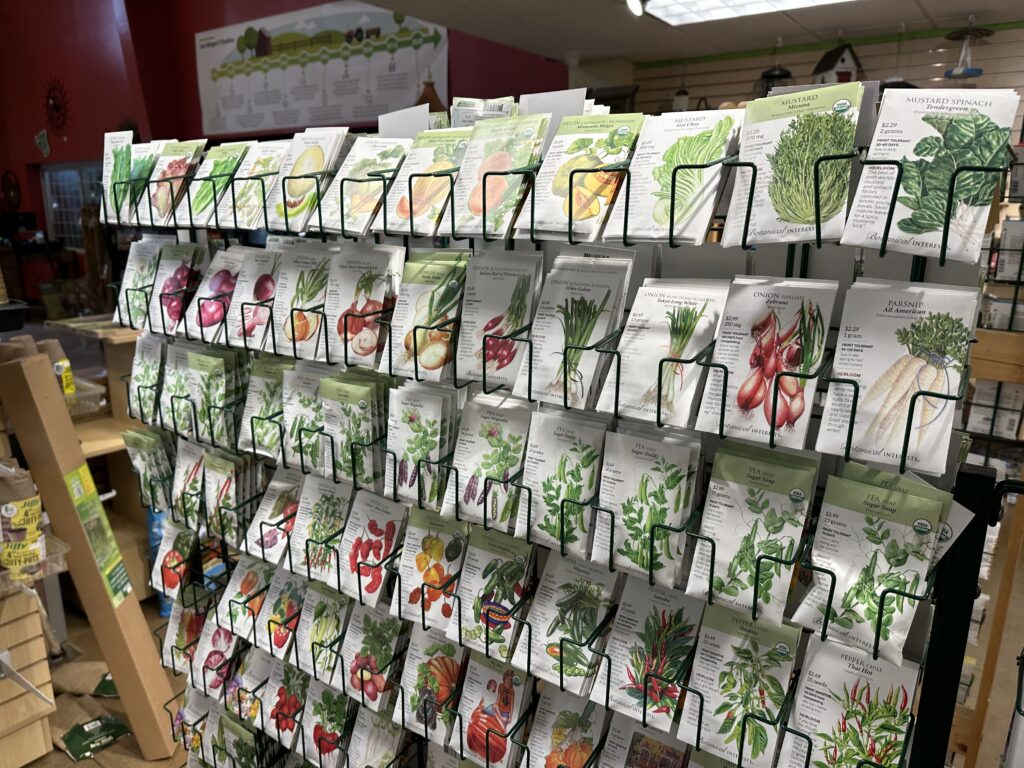
If you’re looking for high-quality seeds, you’re in luck! This year, we have a greater selection than ever before, made up of 4 unique seed companies.
Hudson Valley Seed Co: A great source for organic, non-GMO open-pollinated and heirloom seeds! Each seed packet is a work of art. The Hudson Valley team works with artists for interpretations and stories to go with each variety. New to us starting in 2023, these have been a hit! If you liked them last year, you’ll be happy to know we brought them back and DOUBLED our selection.
High Mowing Organic Seeds: Committed to providing the best organic, non-GMO seeds. High Mowing sources many of their varieties directly from independent and passionate organic seed farmers!
Botanical Interests: A trusted company that sells only high quality, non-GMO, and organic seeds, all responsibly made in the USA! You can rest easy knowing their seed packets are never treated or contain fillers.
Hart Seeds: With over a century of experience, Hart Seeds is one of the oldest seed companies! Their products are never genetically engineered, and they are based out of Wethersfield, Connecticut.
What varieties of seeds can you start right now? Consider onions, leeks, peppers, catnip, chives, parsley, oregano, pansies, echinacea, lavender, rudbeckia, milkweed, coreopsis, foxglove, ice plant, broccoli, kale, lettuce, and others that require a cold period to break their dormancy.
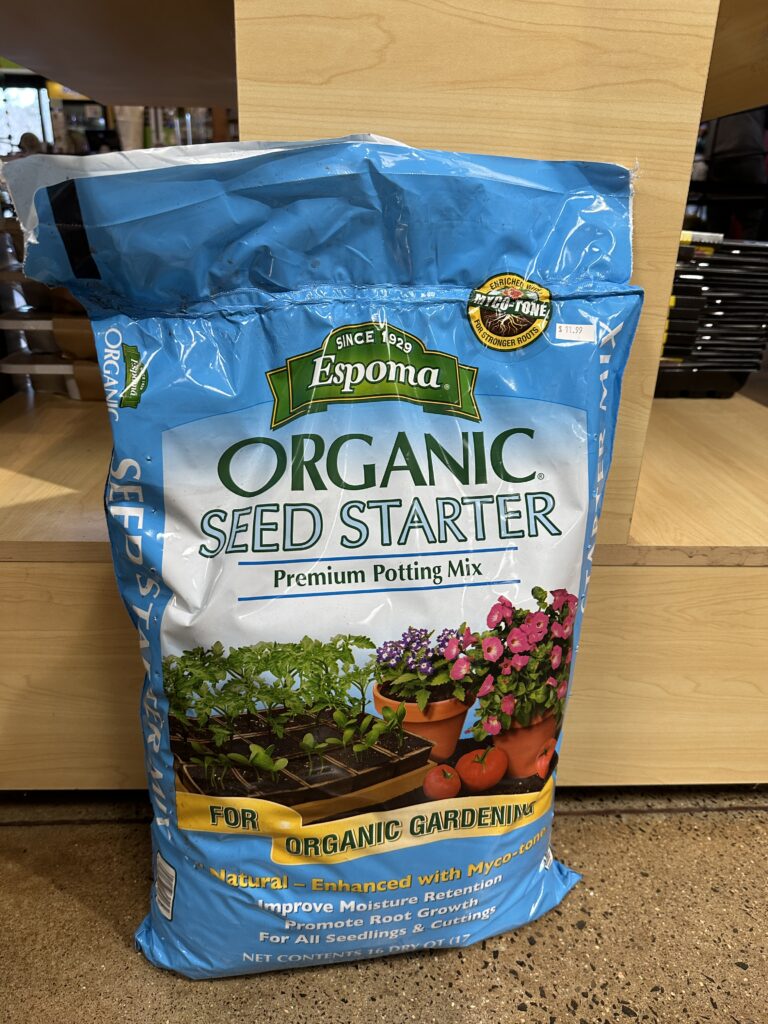
Everything you need for indoor seed starting is here. We recommend getting your hands on some of Espoma’s Organic Seed Starter Premium Potting Mix. Getting nutrient-filled soil is a super important step to ensure healthy growth! You’ll also find grow lights and alternatively, heat mats, which are great to put under your cell packs to help your seeds germinate faster.
Sow seeds outside
Don’t have the room to spare indoors? You can sow many seeds outside in plastic containers like milk or water jugs and salad containers! This method creates mini greenhouses and inside the jugs will be 10-15 degrees warmer than the outside temp. Cut a plastic jug in the middle, leaving a hinge on the back. Fill the bottom half with soil, plant your seeds, and tape the jug back up. Be sure to put any labels inside the containers so they don’t get destroyed by the elements. Place them in an area where they will get some sun. You can start most seeds in this environment – great for perennials, onions, leeks, and more. No squash or pumpkins!
Some seeds require cold stratification and can be planted directly in the ground during the winter, and in some cases, directly into the snow! Direct sowing is great because no transplanting is involved, which some varieties (like poppies) don’t respond well to. Just be sure to mark where you put each seed so you don’t mistake them for weeds when they pop up in the spring! All the varieties in the image below can be directly sown, but if you’re curious about others, always look at the instructions on the back.
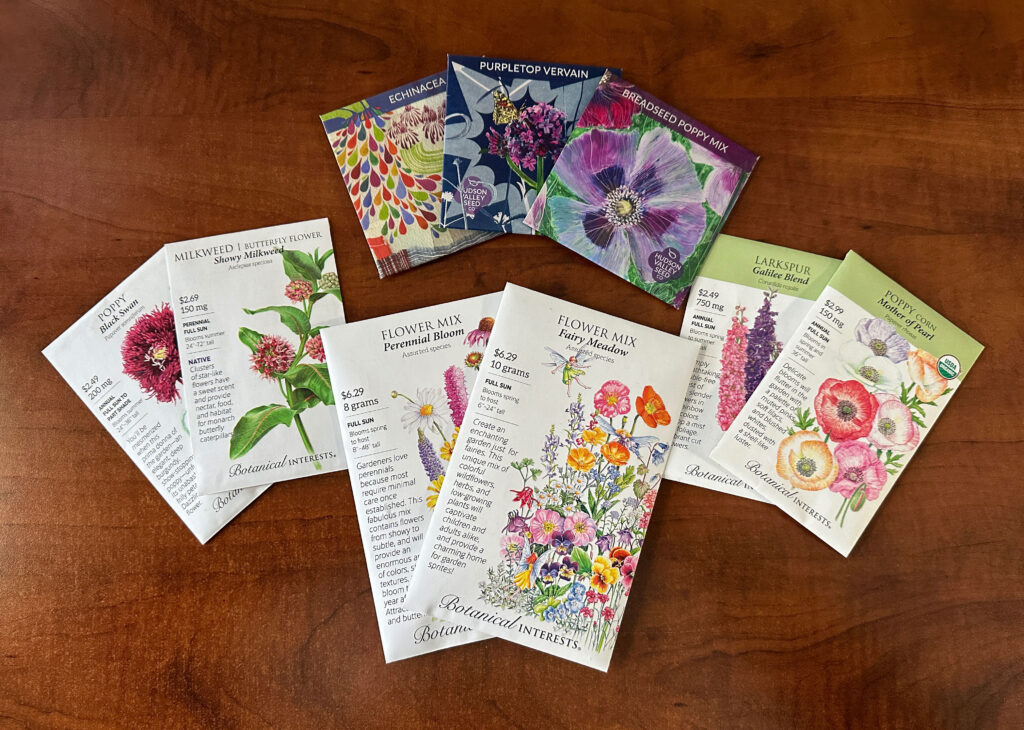
Helpful Hints:
1. You do not have to plant all the seeds that come in a packet. Feel free to save them and they will last a very long time if protected from the humidity. Store in sealed plastic bags or mason jars with lids on them.
2. Know your zone! CT is spread across a few different zones… being aware of your estimated frost dates will help you make educated decisions on when to start which seeds.
3. Seeds that have a longer growing period are fine to plant now. You don’t want to plant seeds with shorter growing periods that like warm temps. For example, if you were to start tomatoes, by the time they are ready to be put in the ground it would still be far too cold outside to plant them!
Get ready for houseplant highlights! This year we will spotlight a new indoor plant each month, sharing care tips, varieties, and unique characteristics.
We’re starting off with our pick for January—Dracaena! This humidity-loving houseplant fits perfectly in an empty spot by a window. Dracaena has a lenient watering schedule (every 10-12 days) and adapts easily to many environments, making it a great option for beginners!

Light Needs
- Prefers indirect lighting, but will also do well in a brightly lit room
- Place in a corner near a window or in front of/across from a window with a sheer curtain
Water Needs
- Let the soil dry between waterings
- Water approximately every 10-12 days
- Loves humidity
Notable characteristics
- Resilient houseplant
- Easily adapts to many environments
- Low maintenance
- Good choice for beginners
- Great air purifier
Popular Varieties
‘Tornado’
Reaches 3-4 feet

‘Pleomele Song of India’
Reaches 3-6 feet

‘Marginata Character’
Reaches up to 6 feet

‘Limon’
Reaches 5-10 feet

Poinsettias are a winter houseplant staple and come in a diverse array of beautiful colors and sizes, with many available here at Van Wilgen’s. With Christmas just around the corner, many of us are looking for gift ideas for family, friends, and coworkers. Poinsettias make the perfect gift for a business holiday party or as a festive decoration in the office and home! With our Poinsettia Wrapping Station, creating an amazingly festive gift is easy. Choose one of our diverse Poinsettia colors, and our team will help you choose a complementary wrap. For an extra twist, add one of our new holiday gift cards!
Keep your Poinsettia happy and healthy and ensure it lasts throughout the season with these easy tips!
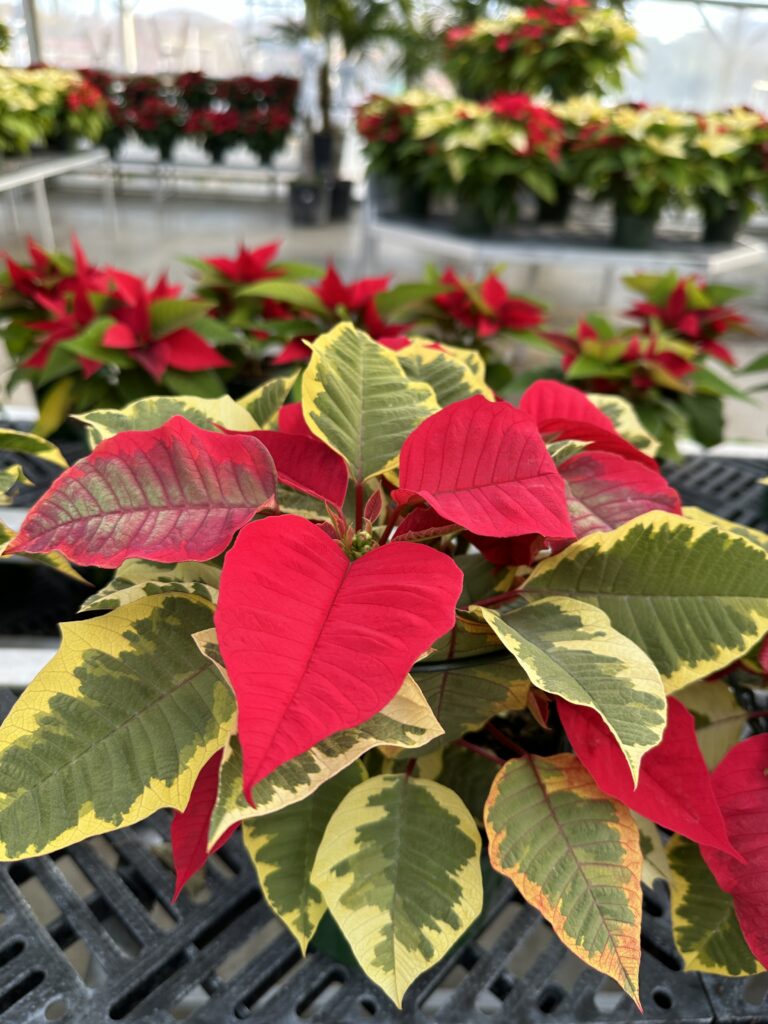
Poinsettia Care Tips:
- Don’t let poinsettias get cold on the ride home from the store. Keep trips and exposure to the cold as short as possible.
- Let the soil dry before rewatering, and don’t drown your poinsettias! The pot itself will feel lighter and you may even notice the leaves of your plant starting to wilt when it’s time to water (similar to a peace lily). When you see this happening, give your poinsettia a thorough watering. It’ll do better with one long drink than multiple little ones.
- Thrive in a warm 68 to 72 degrees – limit exposure to the cold as well as drafts. No placing next to doors or open windows.
- Bright but not direct sunlight – 6 hours of indirect light per day. A sunny window is perfect!
Poinsettia varieties:
Classic Red
A deep, rich, red. An instant Christmas classic!
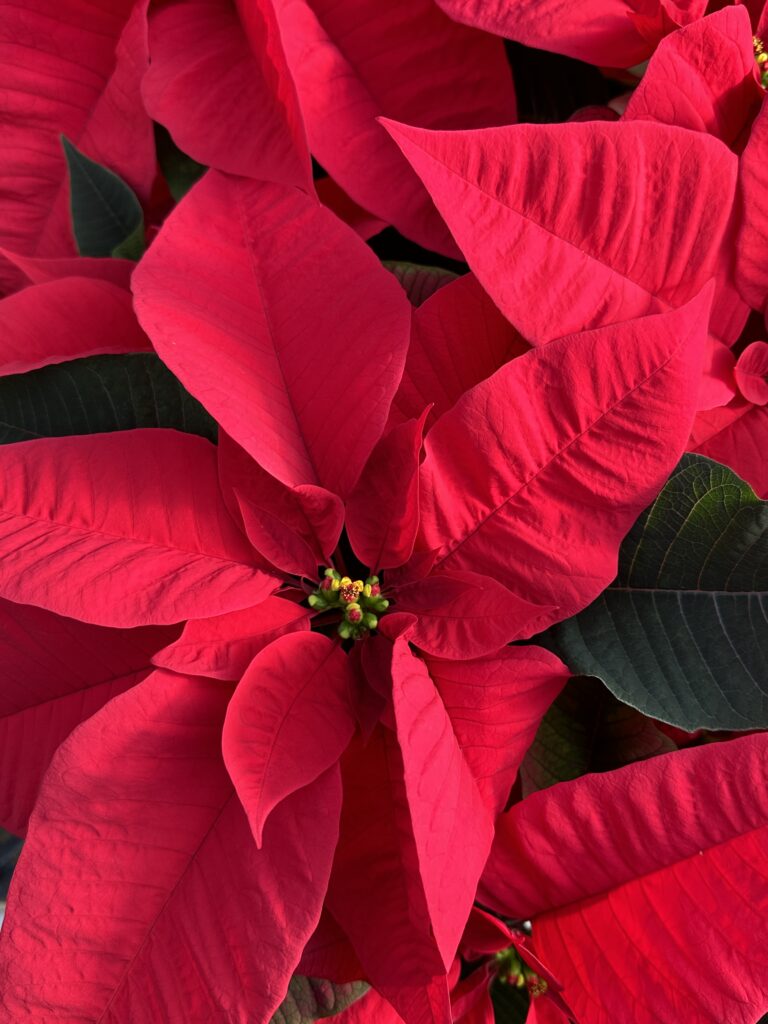
Classic White (Cream)
A creamy, pale white. Pairs well with classic red.
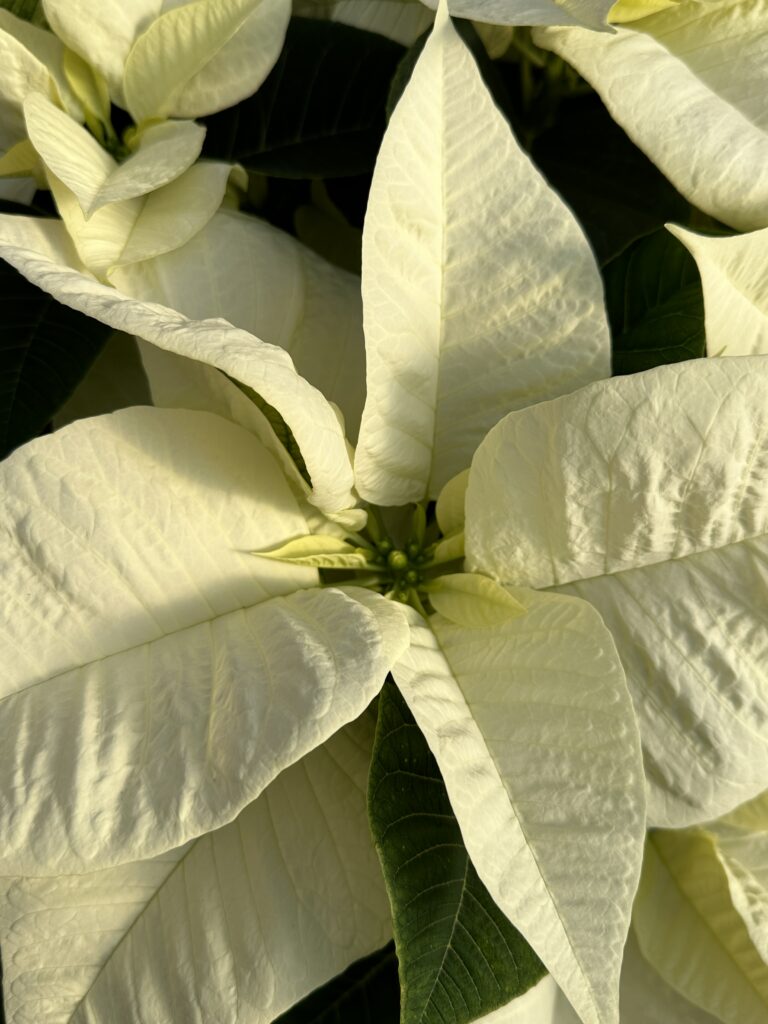
PINK
Classic poinsettia in a delicate rosy pink color!
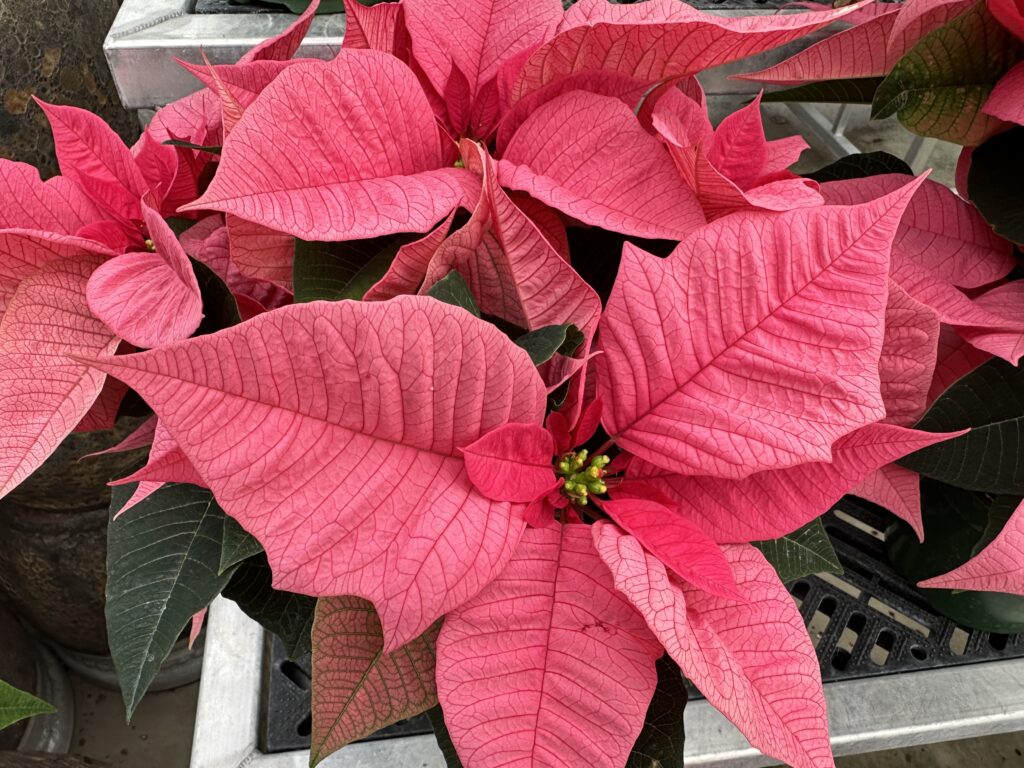
Painted Blue
Blue spray paint on classic white, adds a unique flair.
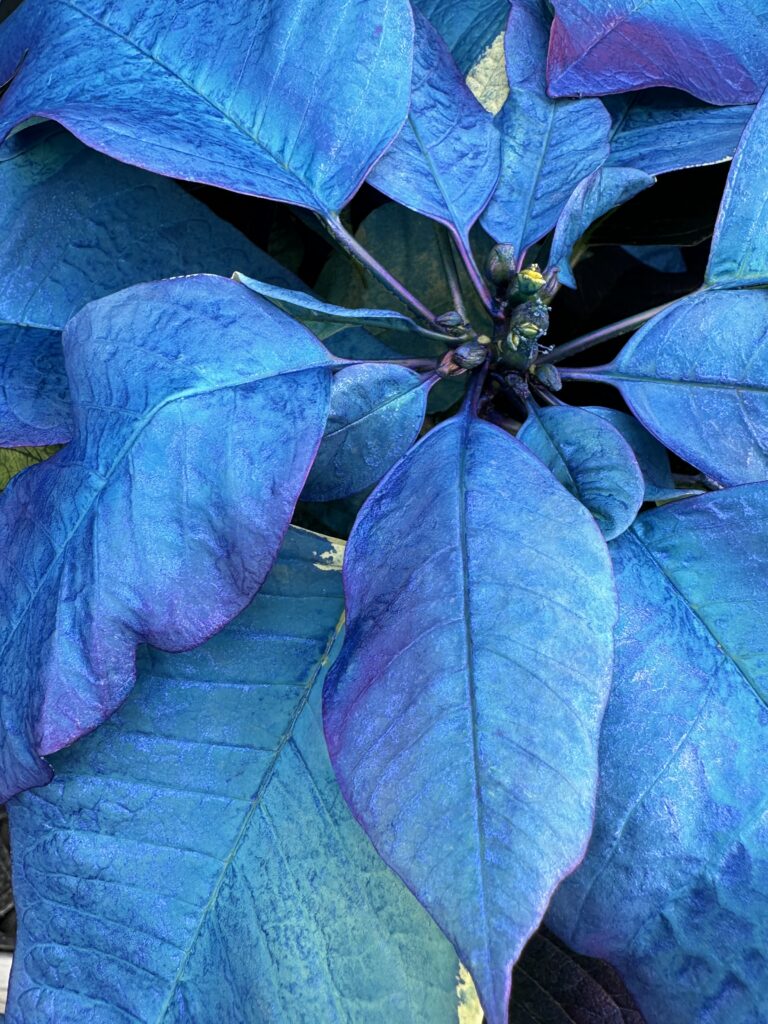
TAPESTRY
Bright red bracts with yellow and green variegated foliage.
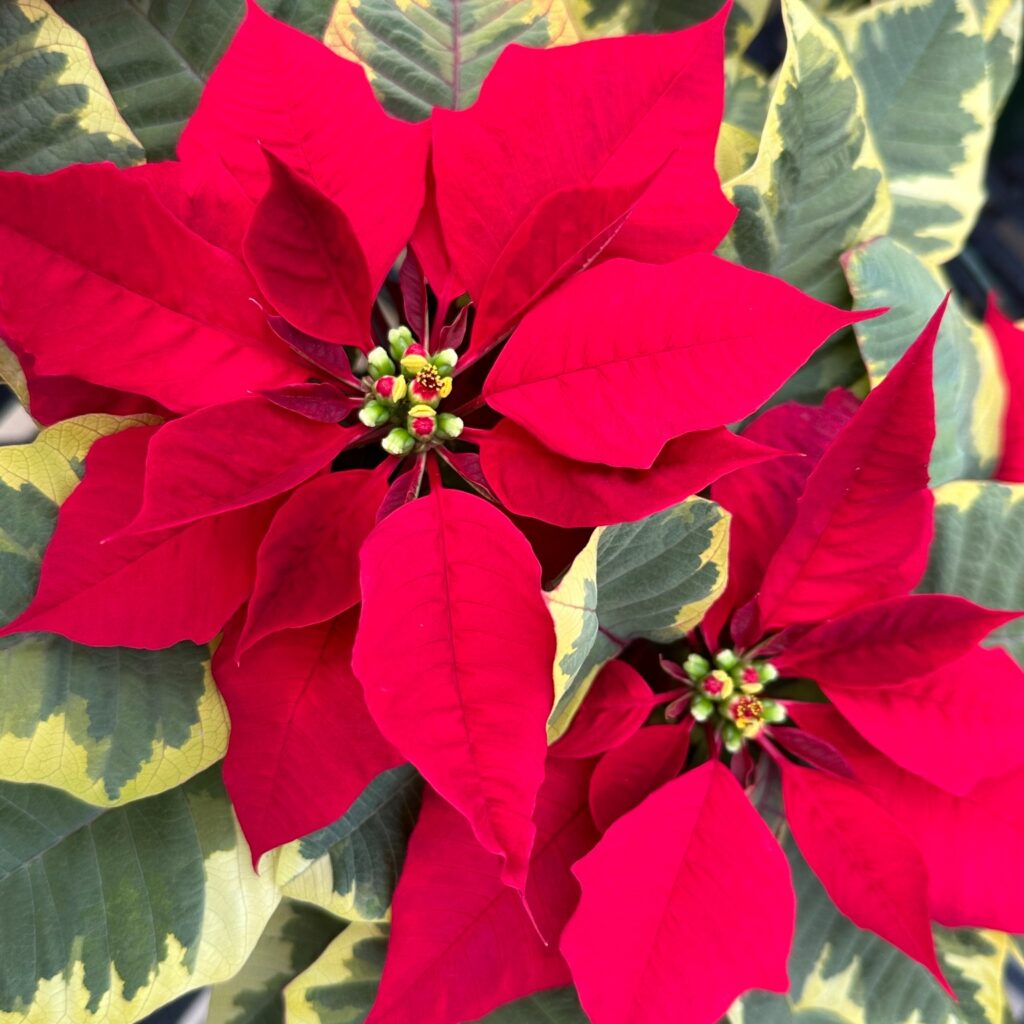
Jingle Bells
Huge dark red bracts splashed with cream!
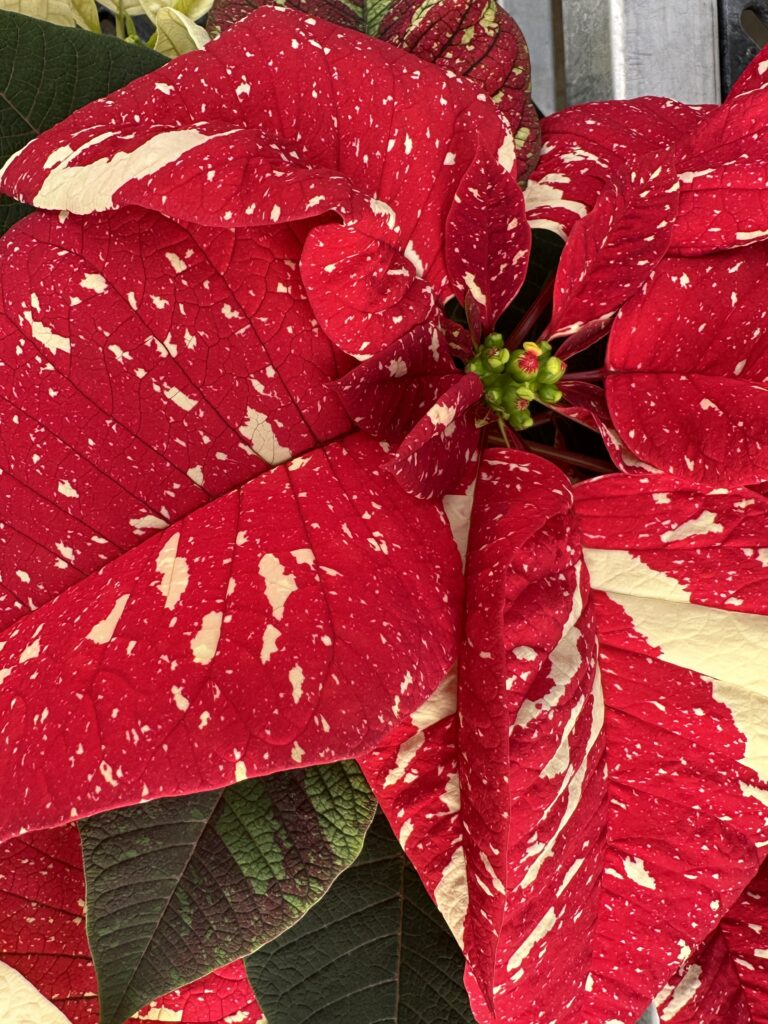
Marbled
Marbled varieties can be a mix of pink, white, and red.
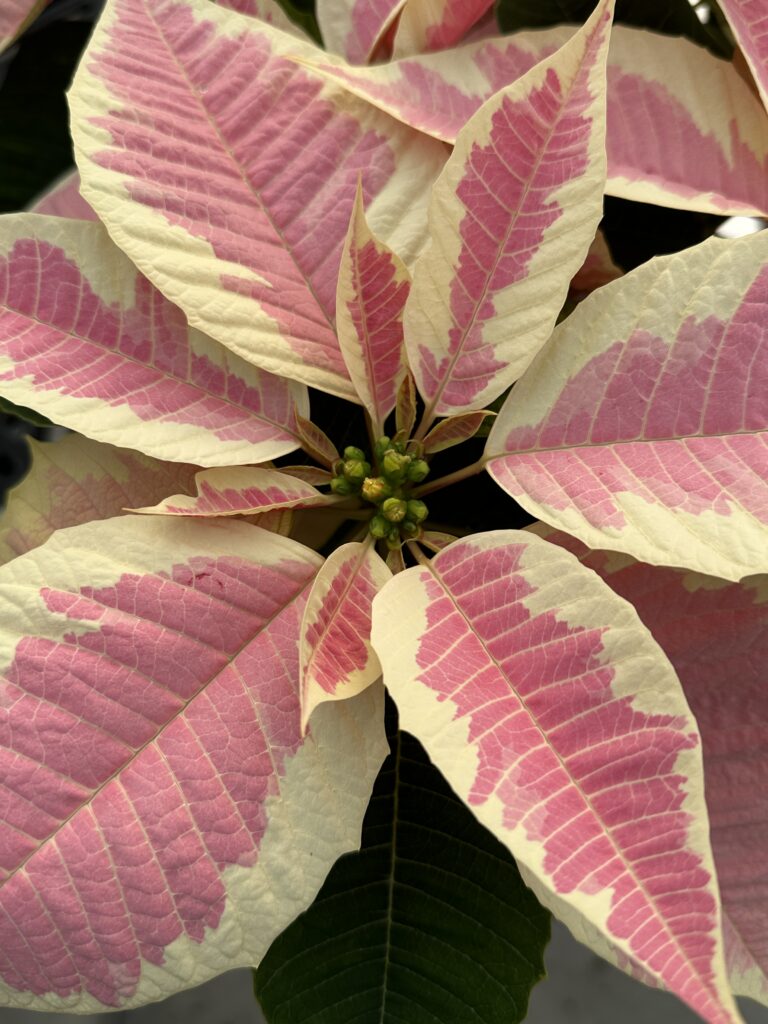
Princettia
A variety with bountiful and more compact bracts! Available in bright pink, pure white, and red.
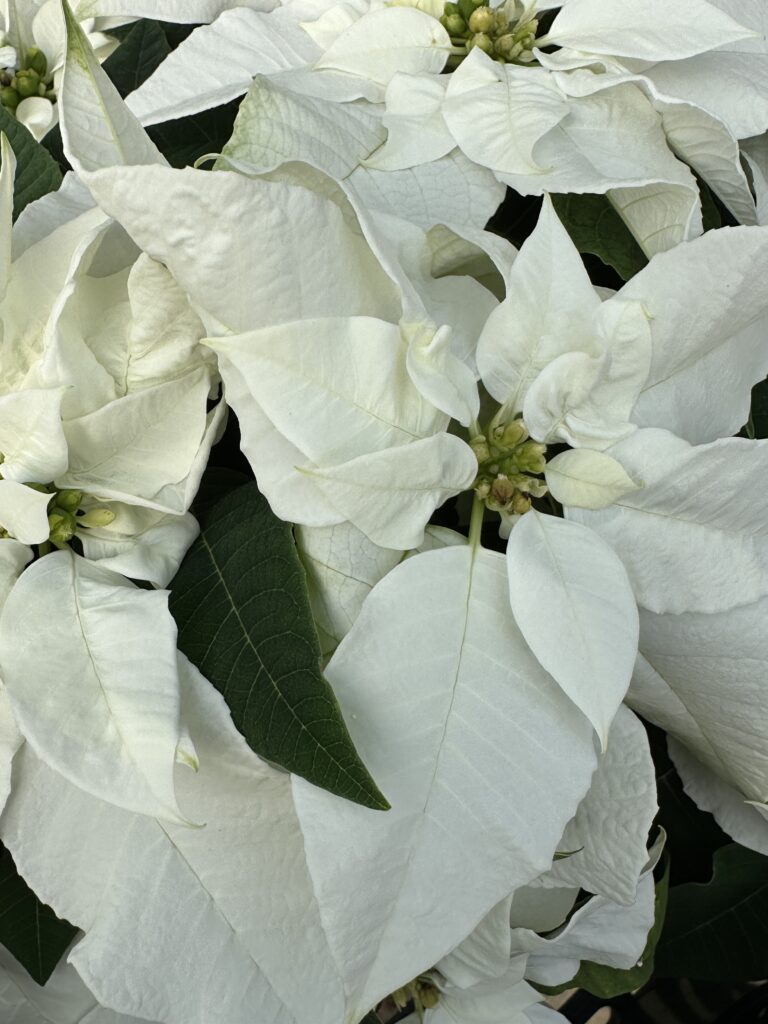
Winter Rose
An older style that is growing in popularity again! Features red, wavy petals.
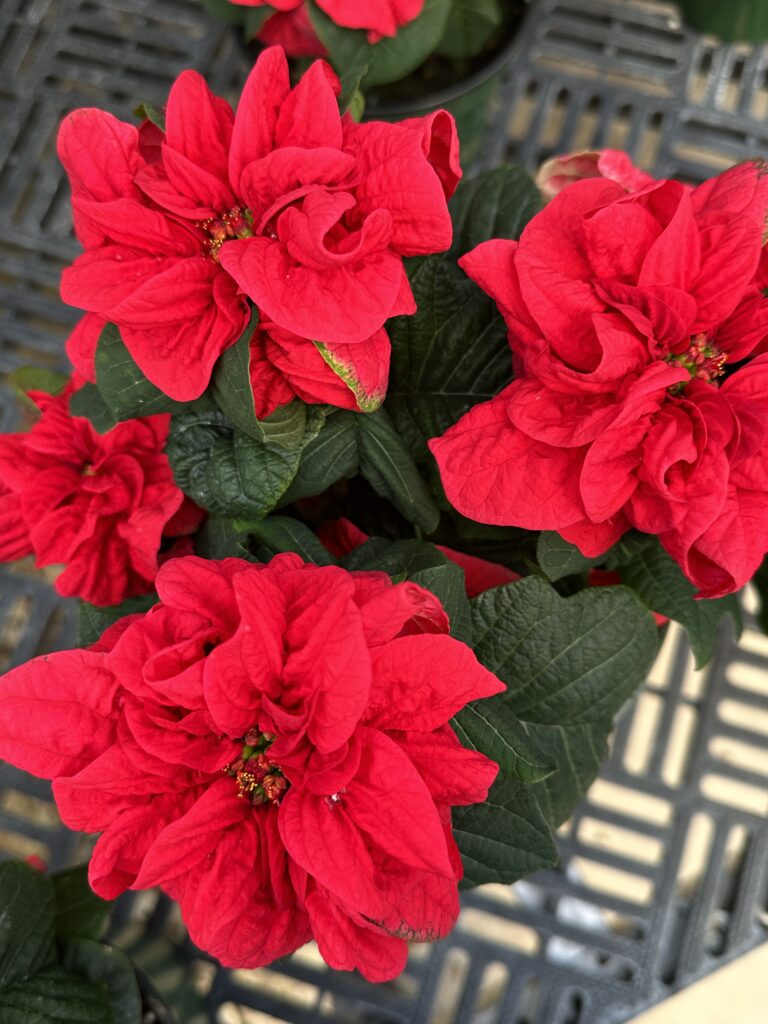
Which style is your favorite? We hope to see you soon!
Christmas is just around the corner—have you finished your shopping yet? If not, don’t worry! Here are some fun ideas you can grab during your stop at our garden center to surprise someone this year.
festive birdseed houses
A thoughtful gift for any bird lover! These houses are coated in premium seed to attract many different kinds of birds to your yard. Once the seed is consumed, the birds may nest in the durable house that’s left for seasons to come. Ensure your winged friends aren’t forgotten this winter!
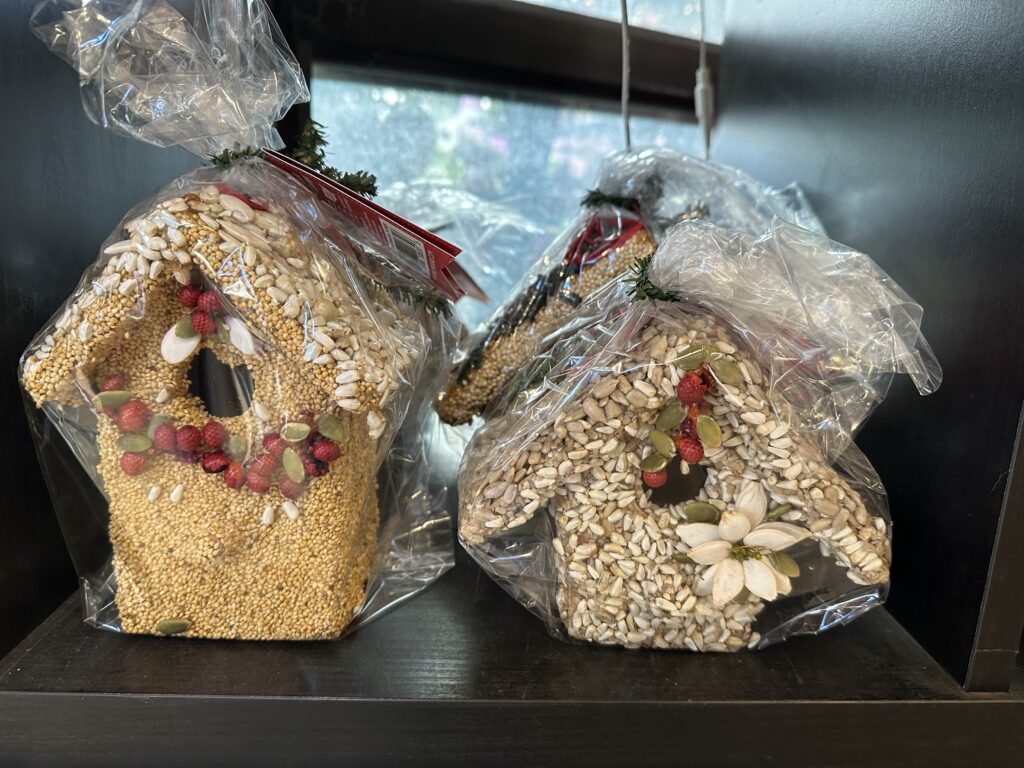
Amaryllis Gift Kits
Brighten up a friend or family member’s space with an Amaryllis kit! These huge bulbs are sure to produce several large blooms that can last up to two weeks with proper care. Ask us to add a bag and gift tag at the register for a ready-to-go gift!
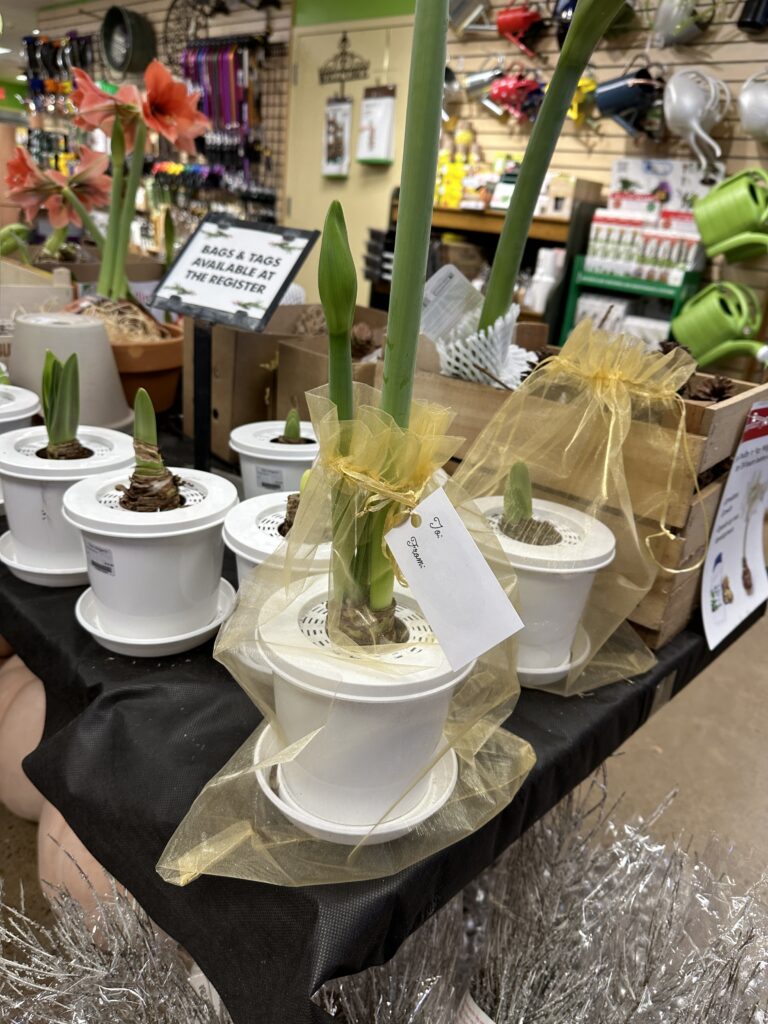
holiday houseplants
We have all your winter houseplant favorites available in the greenhouse! Christmas Cactus, Cyclamen, and Poinsettia make beautiful gifts. Choose from a wide selection of decorative papers at our wrapping station to give your plant a unique touch.
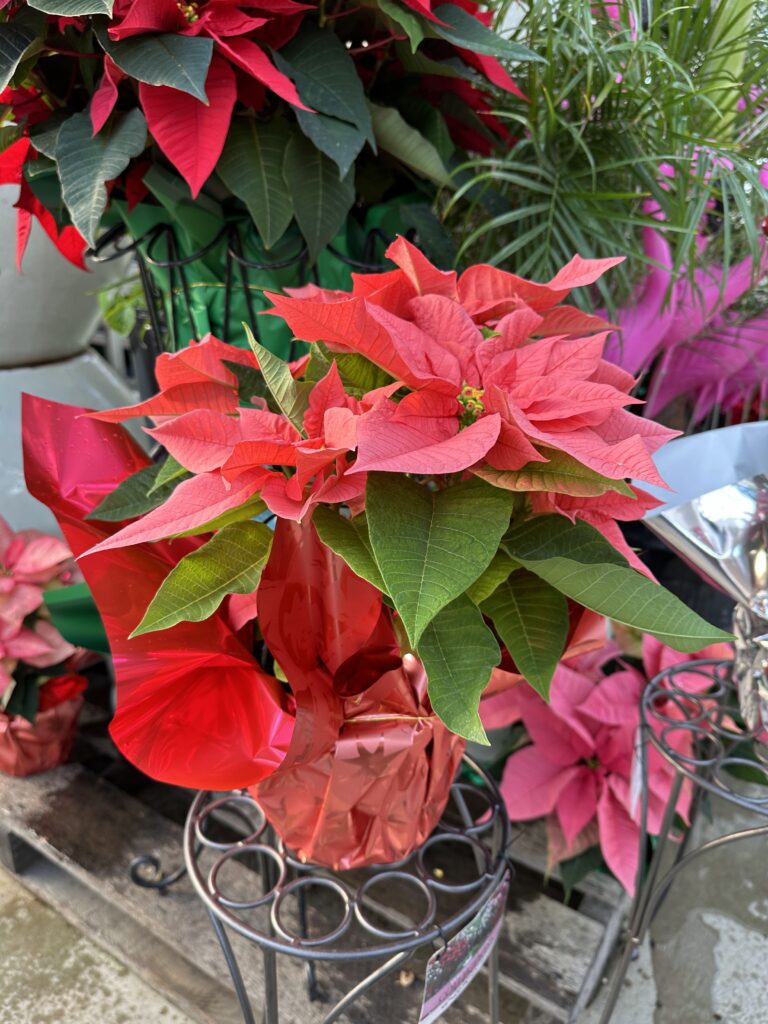
Ginger Cottages
These hand-assembled wooden houses make adorable ornaments or stand-alone decor and are currently 50% off! Grab yours today and find the hidden ginger men and other secrets… there is at least one in every cottage. They also have a small hole on the underside designed to borrow a standard bulb from your tree to light up.
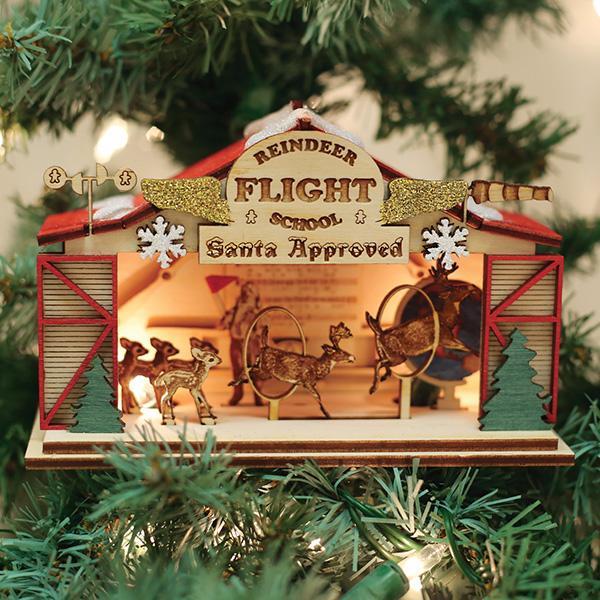
air plants
Air plants are an excellent easy-care option for houseplant beginners. Available loose or in holiday planters!
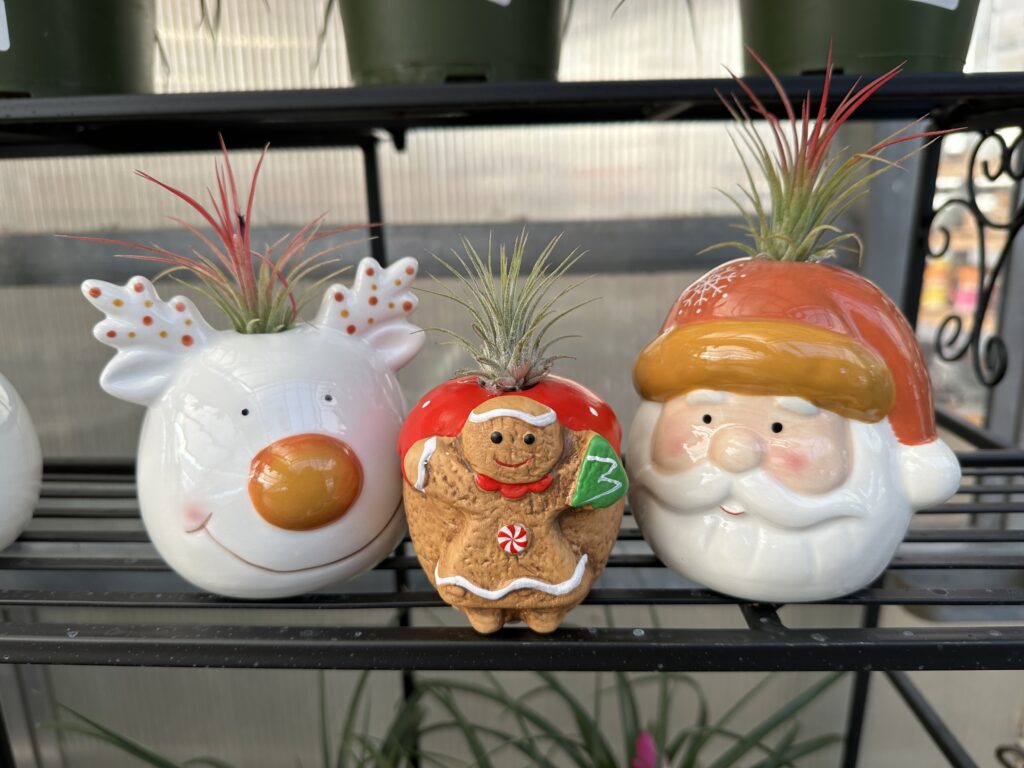
gift card kits
Help the gardener in your life prepare for an amazing crop next year by putting together a gift set of ‘evergreen’ gardening items. Grab a unique pot, tools, and a pair of gloves to go along with a gift card for a thoughtful gift set. Bags and to/from hanging cards are available at the register!
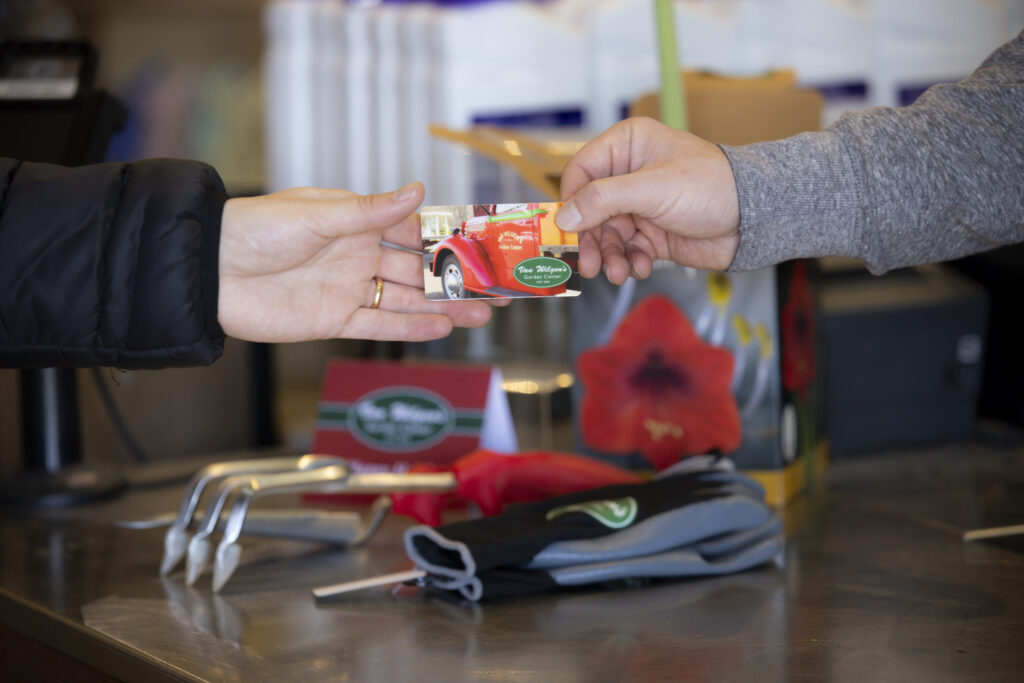
figurines and snow globes
Looking for something more versatile? Festive decor including snowmen and snow globes make fun gifts for anyone on your list who loves to decorate for the holidays!
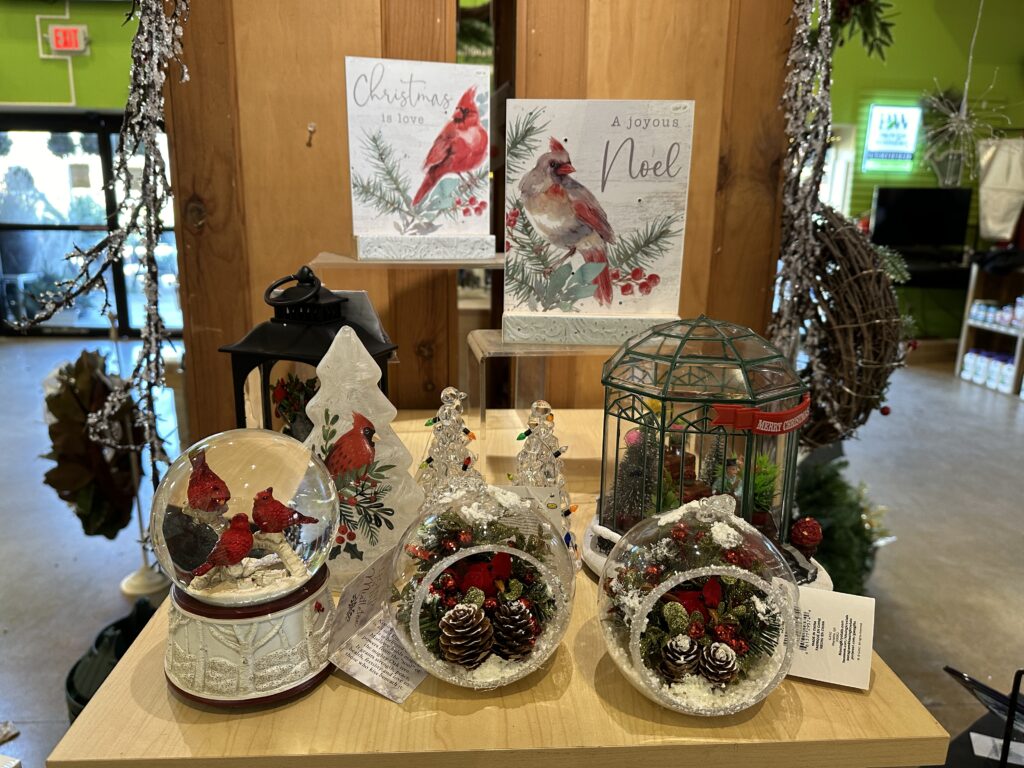
the Growing Candle
Get a gift that keeps on giving! With The Growing Candle, you’ll be giving more than just a scented candle. After you burn through the wax, you can plant the label and grow wildflowers! Choose from different designs and scents to customize this unique gift for that special plant lover in your life. Grab yours today for 25% off!
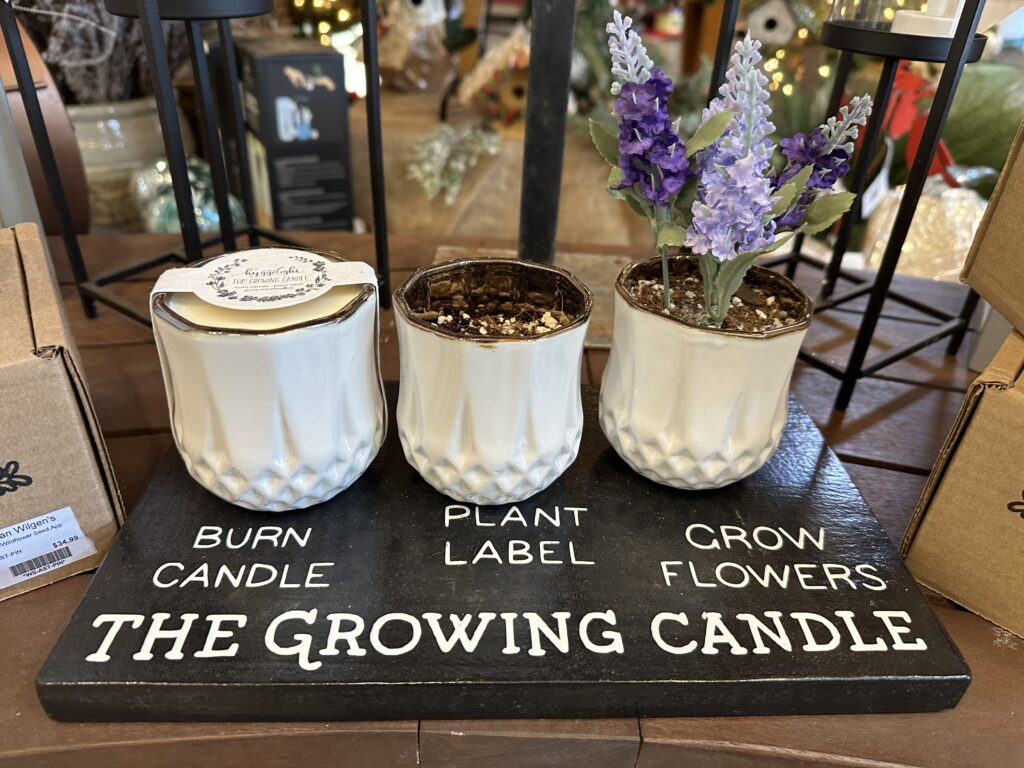
It’s time to find your perfect Christmas tree and take it home… but how do you make sure your tree stays in tip-top shape throughout the holiday season? Think of a cut tree like a large bouquet. Many of the practices we use to care for a vase of freshly cut flowers transfer over to our care of cut Christmas trees. Below are some simple but important tips to keep in mind when you bring your tree home this year.
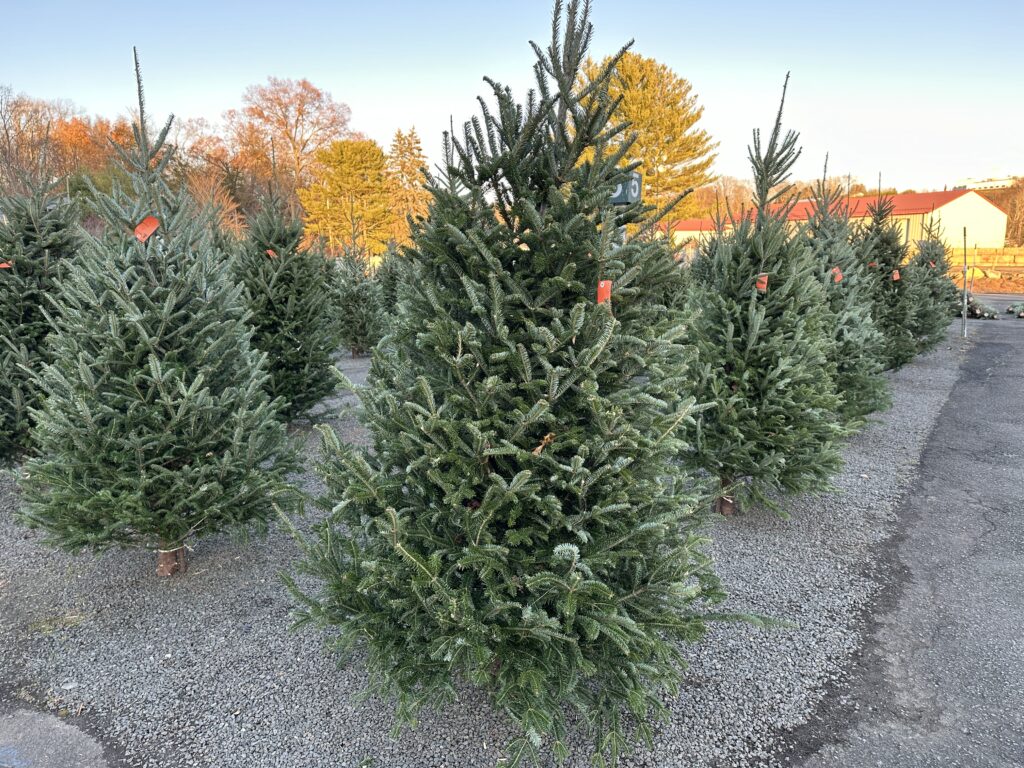
1. Choose a stand that is large enough for your tree. Shaving down the bark to get the tree into its stand is bad practice. Those outer layers of bark are the best at absorbing water, which is the most important part of keeping our tree fresh!
2. Put a fresh cut on it. Feel free to ask one of our tree and shrub crew to take a couple of inches off the bottom, they don’t mind and your tree will thank you for it! This will help your tree take in more water. Try to avoid getting this fresh cut dirty and do not drill a hole in the base of the tree.
3. Get it in a bucket of water as soon as possible. Your tree will soak up A LOT of water, especially in the first couple of days. It’s important to make sure you keep refilling the bucket as needed to keep your tree happy. At the very least, check daily throughout the holiday season.
4. Avoid home remedies. Never add anything to your tree’s water other than products specifically formulated for it. Using home remedies from the internet has no effect at best, and at worst may hasten the decline of the tree! Prolong is a product made to preserve your tree’s freshness… if you want to add something to help your tree, try this!
5. Keep away from fireplaces. This includes space heaters, heat vents, direct sunlight, and even fluorescent Christmas lights. All of these will dry out your tree!
6. Enjoy it! Every tree is different… and once the ornaments are on it they all look amazing.
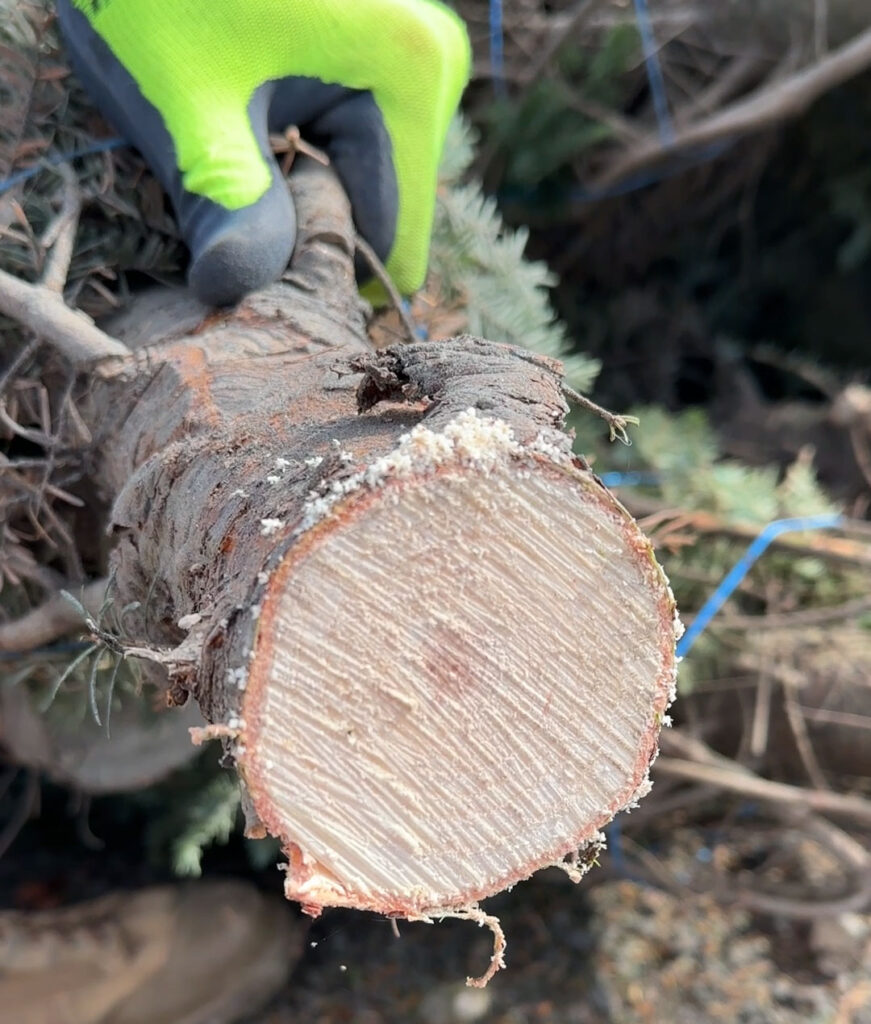
Concerned about the needle shed? Don’t worry… this is a very natural process! All evergreen trees lose about a third of their needles every year, which happens from the inside out where there is less air, sunlight, and circulation. Once we get your tree through the baler, most, if not all of that shed will be removed… but don’t be surprised if you find needles dropping here and there!
In the end, it is all about maintaining and keeping moisture in your tree. If you take the steps to get your tree into water as soon as you can after the fresh cut and keep the water in your stand full at all times, you will have that perfect Christmas tree looking its best through the holiday season. We hope you have the very best and brightest holiday season and we look forward to seeing you soon!
Watch VideoO Christmas tree, o Christmas tree, what kind of Christmas tree is best for me?
For many of us, putting up and decorating a Christmas tree is a staple of the holiday season. Gathering with the family, pulling out boxes of handmade ornaments, and finding the perfect branch to put each one on is a time-honored tradition. For the truly adventurous, choosing a tree begins with a trek into our tree field with a saw in hand and seemingly limitless choices around you. At Van Wilgen’s, we carry several varieties of Christmas trees, each with unique features. To help make the choice a little easier, we’ve compiled a few quick facts about our favorite tree options.
Fraser Fir
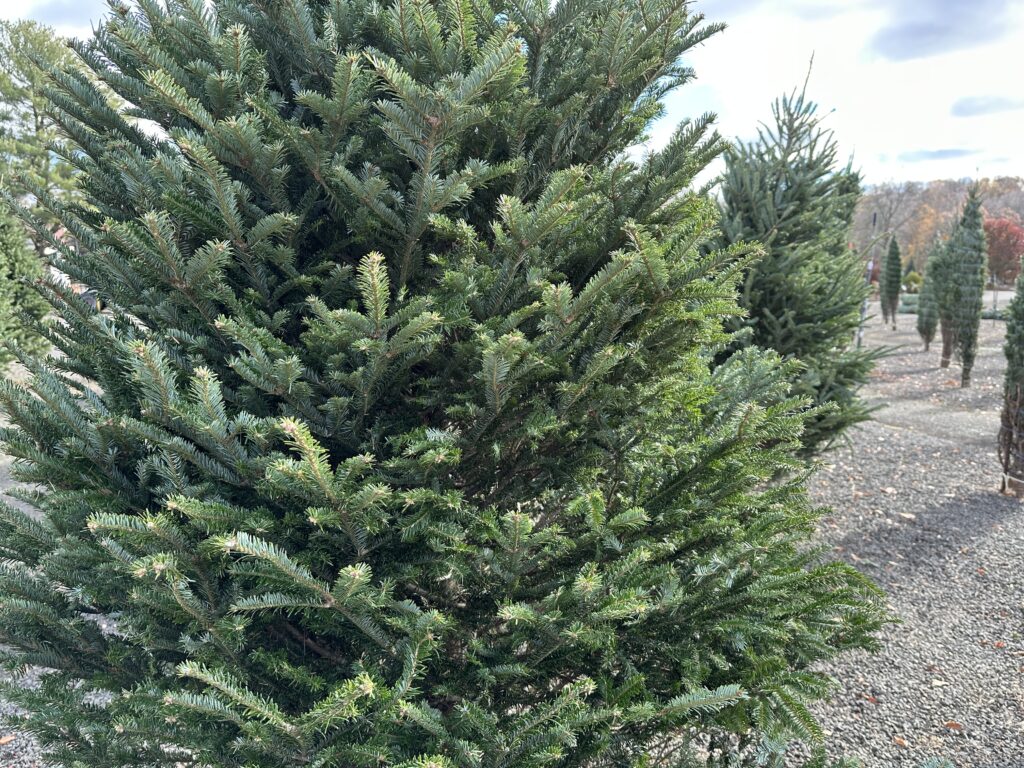
- Pre-cut trees range in size from 4 feet up to 8 feet tall
- Needles are short, dark green with a silver underside
- Soft to the touch
- Very fragrant with excellent needle retention
- Branches are strong, making them great for heavy ornaments
Douglas Fir
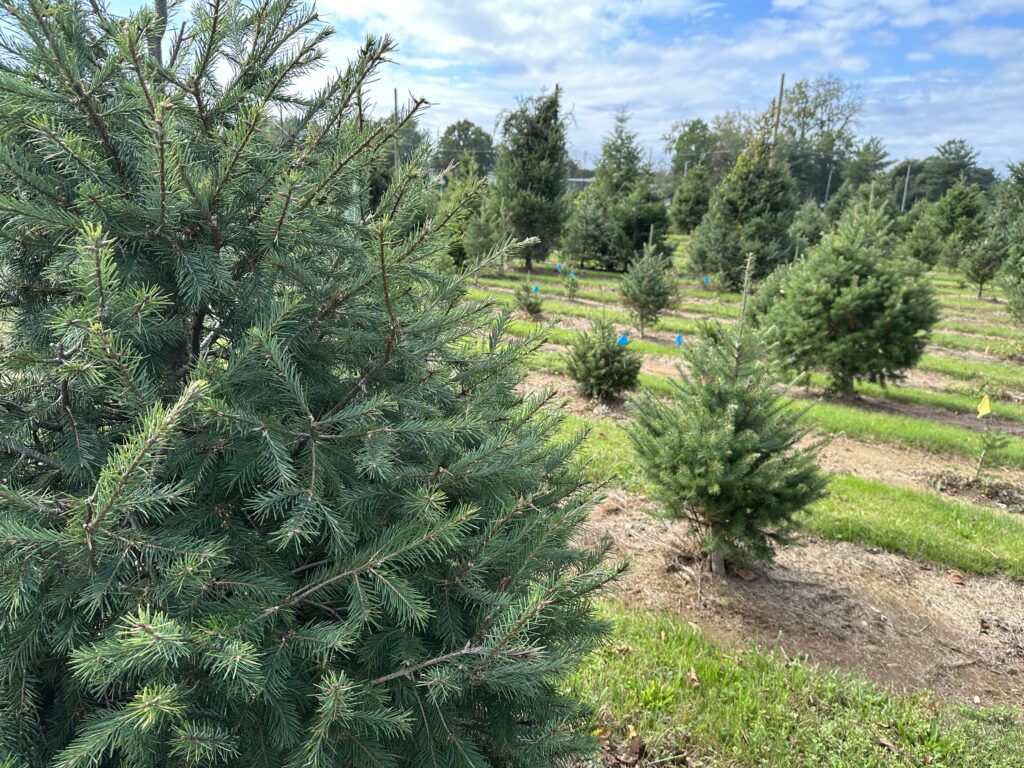
- Trees are up to 8-9 feet in height
- Needles are long and light green
- Soft to the touch
- Very full shape
- Extremely fragrant – smells like oranges!
- Best needle retention
Blue Spruce
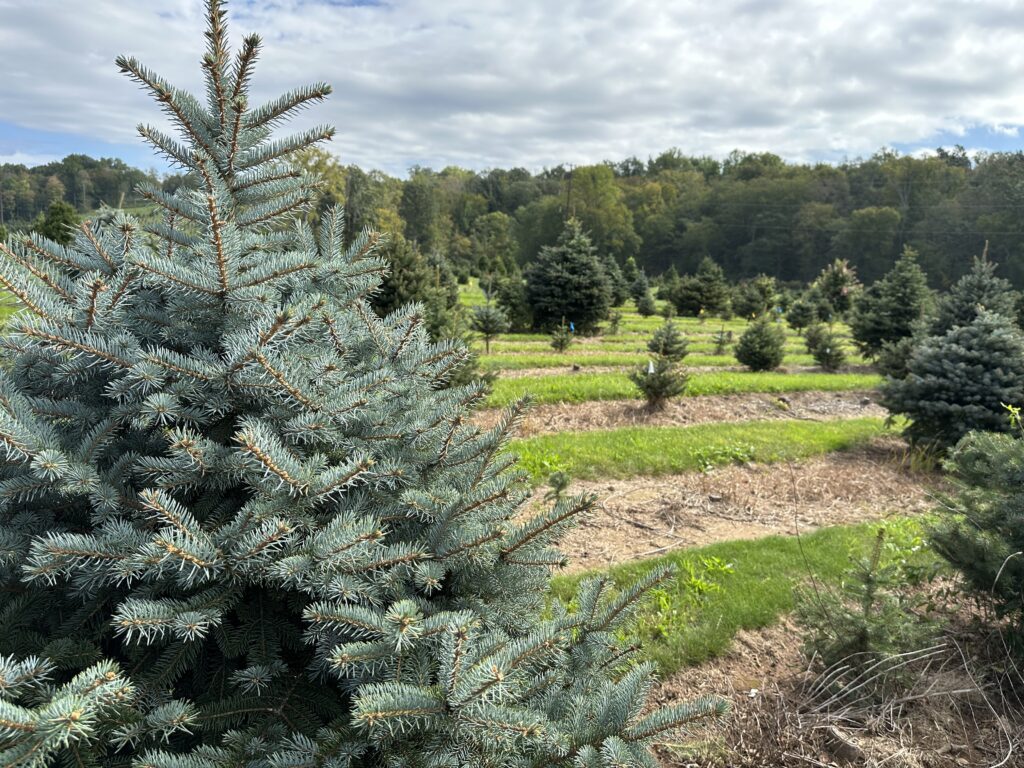
- Up to 10 feet in height
- Needles are a frosty blue color
- Sharp to the touch…Kids and pets be careful!
- Has the strongest branches, making it the best choice for heavy ornaments
- Pleasant fragrance
- Good needle retention
Turkish Fir
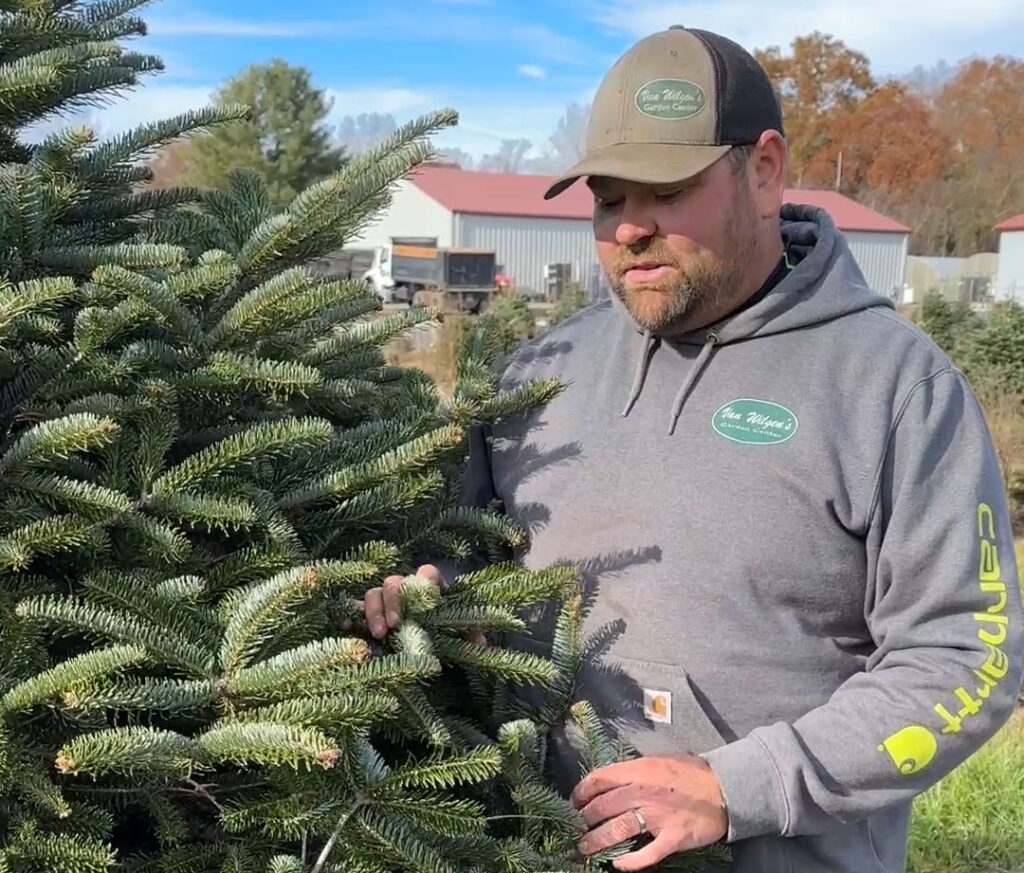
- A Van Wilgen Favorite!
- Up to 7-8 feet in height (6-7 feet is average)
- Dark green needles with silvery undersides
- Needles are larger and showier than Fraser Fir
- Soft to the touch
- Best fragrance and needle retention
- Sturdy branches are perfect for heavy ornaments
Turkish Fir is quickly becoming our most popular Choose & Cut Christmas tree at Van Wilgen’s. Growing Christmas trees is a labor of love. A lot of work goes into filling our fields with premium Van Wilgen Grown trees. We all know the Fraser Fir, the most popular Christmas tree in our area. They are great for needle retention, have great color contrast, and are pretty good for holding heavy ornaments. Frasers are slow-growing and may take up to 10 years before harvesting. They are also tricky to grow. Frasers do not like hot dry summers and are prone to pests and fungal problems.
Those are many of the reasons we started looking for alternatives to Fraser Fir for our fields. We needed a tree that had all the great features of Fraser without many of the headaches. After being recommended Turkish Fir by many in the industry, we decided to try them out. At the time none of us knew much about them. All the research was positive so we started planting them in our fields. We quickly saw we had a winner! They were growing much faster and fuller than Fraser and had not suffered pest damage or root rot like Fraser either.
Turkish Fir is native to the mountains of the Black Sea. Their needles are two-tone green and silvery blue, giving off a shimmery look. They are very full and elegant and have been the top choice for Christmas trees in Europe for many years. They have sturdy branches for heavy ornaments and excellent needle retention. I invite you to walk our 15 acres of trees and see how great Turkish Fir are.
We look forward to seeing you soon!
Make sure that all your plants are properly watered going into the winter season! Plants that are dry in the winter have a greater chance to sustain winter injury and cause a lot of die off. With the lack of rain, it’s even more important to keep up regular watering. On the bright side, nighttime temperatures are getting lower so plants won’t dry out as quickly. Still, it can be tricky to know just how much water to give all of your plants. To keep things easy, refer to our Van Wilgen’s Watering Guide to help you through the process. A well-watered plant in the fall will result in a healthy and happy plant come spring!
More questions? Stop by our garden center and ask our friendly and helpful staff for advice.

Plant your Amaryllis and Paperwhites now so you can enjoy them throughout the holiday season! Amaryllis are well known for their huge showy blooms, while Paperwhites are a great easy-care choice for fragrant flowers in a shorter time. Both these festive bulb varieties make excellent centerpieces or gifts for your friends and family. Follow these simple tips to get yours started today!
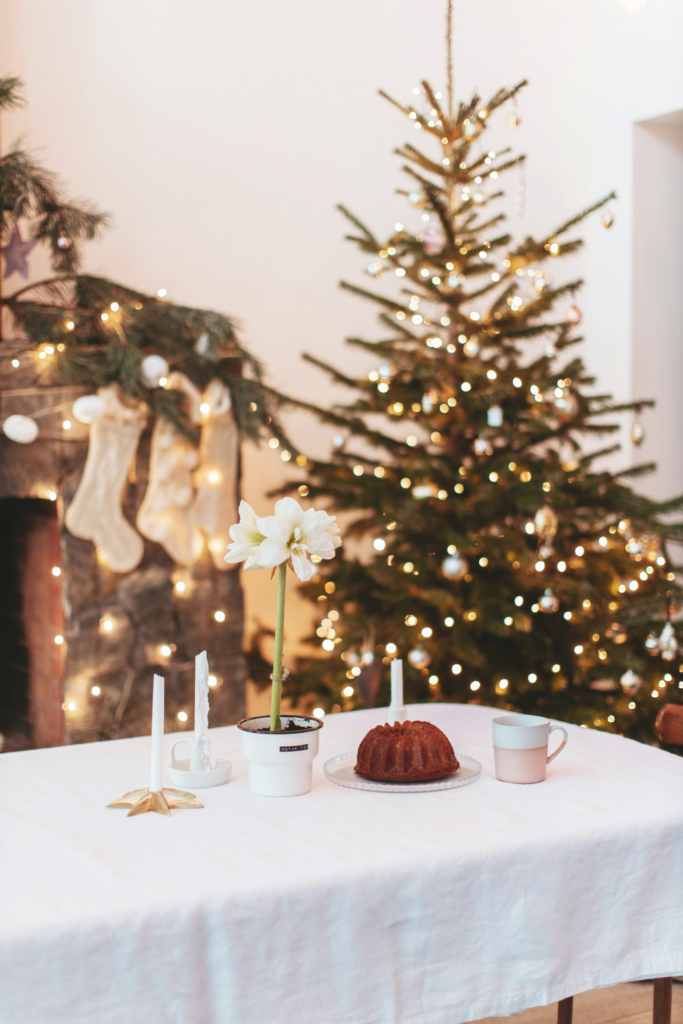
Amaryllis
Plant your bare bulb Amaryllis ASAP if you want to enjoy their blooms for Christmas, as they can take 6-10 weeks to bloom. If you’re behind, don’t worry! We also offer kits and waxed bulbs which bloom quicker.
Tips and Tricks
- Soak bulbs in Van Wilgen’s JumpStart for 24 hours before planting to provide them with essential nutrients and accelerate bloom time
- When soaking the bulbs, water should only cover up to the basil plate (bottom where roots attach to the bulb)
- Always follow the directions on the plant tag first (blooming times below may vary depending on the bulb)
- Bigger bulbs result in more blooms
- Plant the bulbs about 1/2 to 3/4 of the way up in a nutritious potting compost, while being careful not to damage the roots.
- Choose a pot with drainage holes and do not pack the soil. Amaryllis are vulnerable to bulb and root rot and should never be left to sit in water.
- Set the bulb securely upright after planting.
- Place the potted bulb in a warm place with direct light. (The ideal temperature is 68 – 70°F.)
- Water sparingly until the stem appears. Gradually water more as the leaves and buds appear. At this point, the stem will grow rapidly and flowers will develop after the plant has reached its full height.
- Make sure to turn potted bulbs every other day to keep stems growing straight
- Stagger planting your bulbs over several weeks to ensure a continuous bloom cycle over the winter season
Waxed Bulbs
- 4-6 weeks to bloom after placing in a warm area
- No-soil option
- Watering is not required
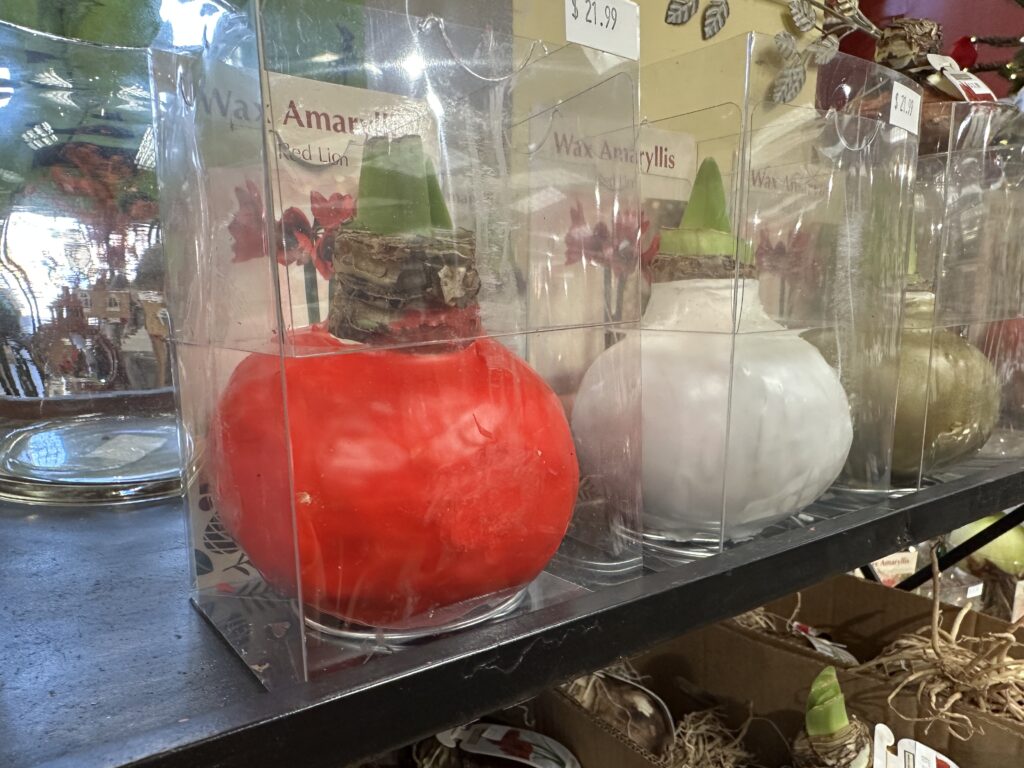
Pre-Potted Kits
- Typically faster to bloom (2-3 weeks after placing in a warm area but may take up to 6-8 weeks)
- Ready-to-go option makes for an excellent gift
- Variety of colors
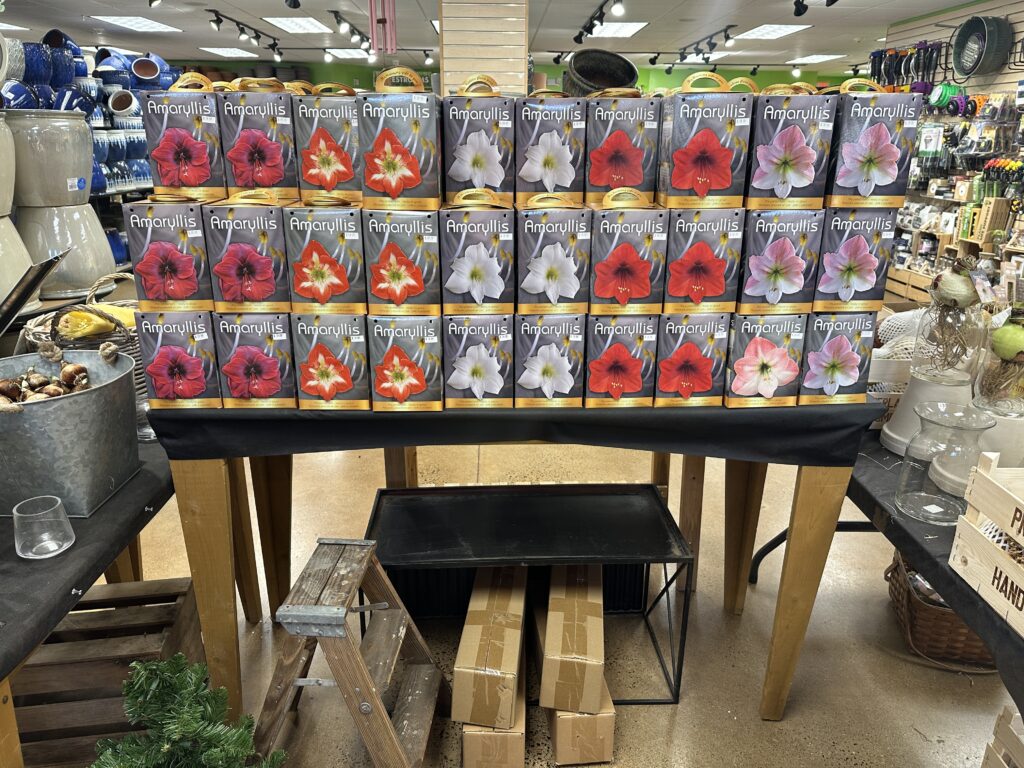
Bare Bulbs
- 6-10 weeks after planting to bloom
- Large variety of colors to choose from
- Pick out your own bulb
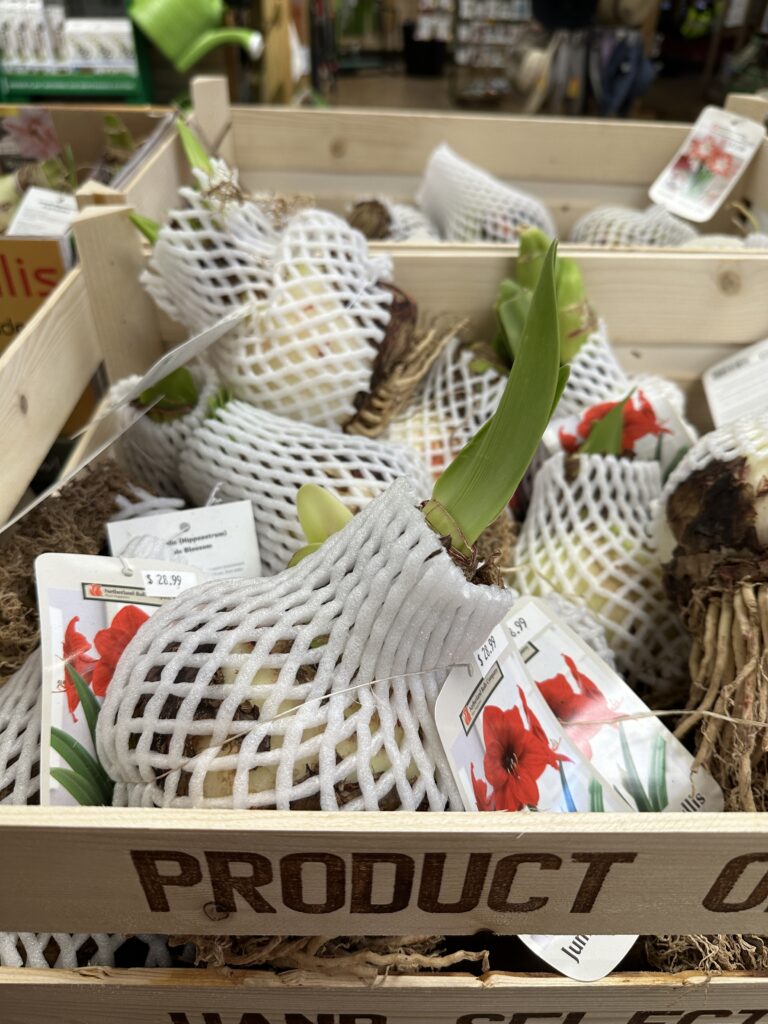
Paperwhites
Plant your Paperwhites before the end of November if you want to enjoy their blooms for Christmas, as they can take 3-5 weeks to bloom.
Tips and Tricks
- Soak bulbs in Van Wilgen’s JumpStart for 24 hours before planting to provide them with essential nutrients
- When soaking the bulbs, water should only cover up to the basil plate (bottom where roots attach to the bulb)
- Always follow the directions on the plant tag first (blooming times below may vary depending on the bulb)
- Choose a shallow pot with no drainage holes and add a layer of pebbles to the bottom. Fill the water so that the level just reaches the base of the bulbs. Check regularly and add water as needed
- Paperwhites can also be grown in soil if preferred
- Place on a cool windowsill
- Make sure to turn potted bulbs every other day to keep stems growing straight
- Stagger planting your bulbs over several weeks to ensure a continuous bloom cycle over the winter season
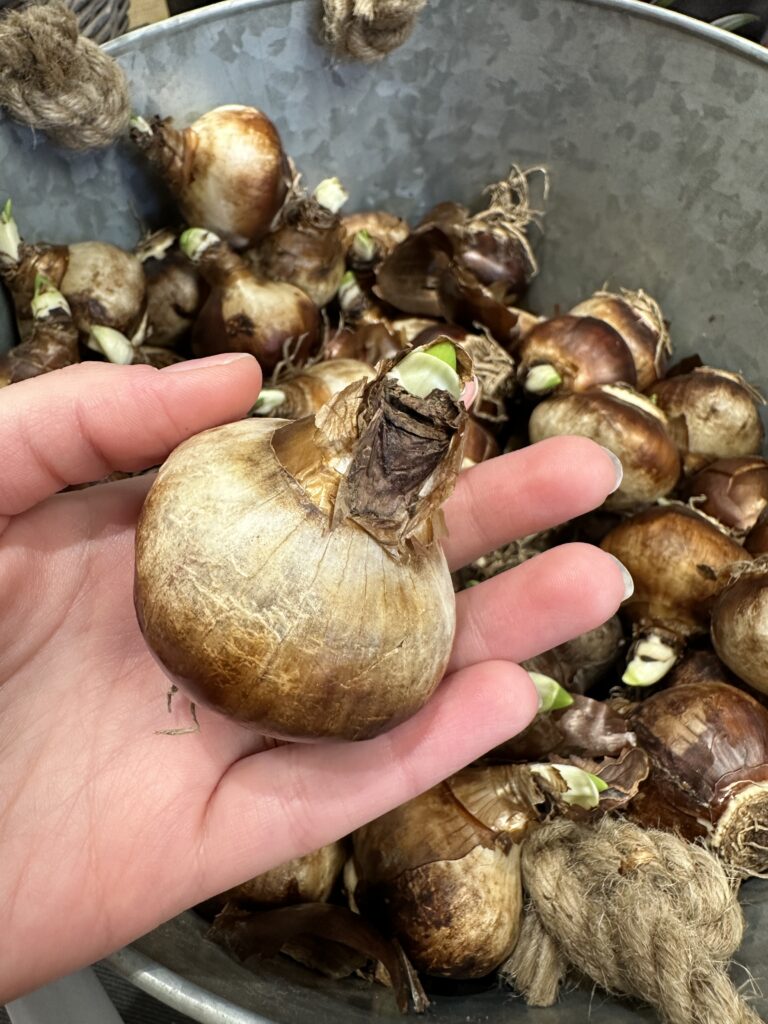
Fall is here which means cool weather and frosty mornings are creeping in. Unfortunately, plants have no heater or jacket to keep warm, so they drop their leaves as temperatures plummet. If you’re like many gardeners, this is when you’ll want to hack everything back. Resist that urge – fall is not a good time to prune everything in your yard. The best time to cut back most plants is in late winter or early spring when they are fully dormant. Aggressive cutting during fall exposes newer growth, making the plant more susceptible to winter damage!
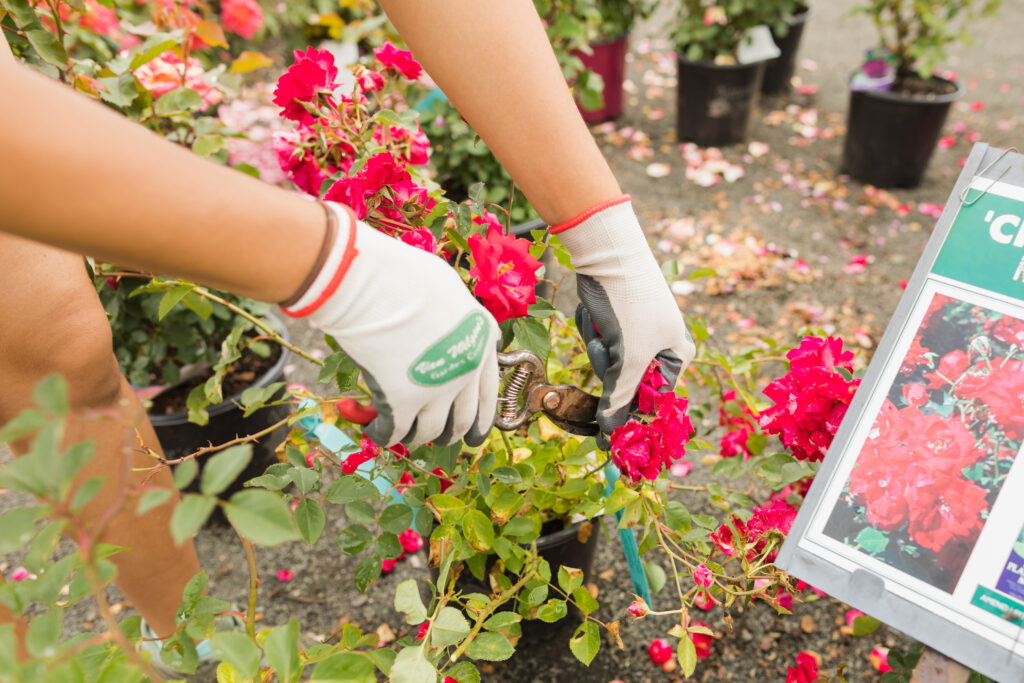
Spring BloomING TREES & SHRUBS
Make sure to prune these after they flower, using July 4th as a cut-off date
Examples: Lilac, Azalea, Rhododendron, Forsythia
Summer BloomING TREES & SHRUBS
Prune summer-blooming plants at the end of winter or early spring before they flush out
Examples: Butterfly Bush, Rose-of-Sharon, Crape Myrtle, Caryopteris, Panicle Hydrangeas
MOPHEAD & LACECAP HYDRANGEAS
Except for deadheading, these popular Hydrangea varieties should not be pruned at any time. Cutting them back will prevent them from blooming.
Roses
Roses like to be pruned once per year in late winter/early spring after your last frost date
PERENNIALS
Most perennials can be cut back in the fall EXCEPT Lavender, Russian Sage, and Geum
Ornamental grasses
Keep these around all winter to protect the base of the plant, where the new growth will emerge in spring. Prune them between March and April
EXCEPTIONS
Good reasons to break out your pruning shears year-round include:
- Dead, Diseased, or Dying sections – prune off whenever you see this becoming an issue. Waiting to cut these sections off will only hurt your plant.
- Deadheading – removing spent blooms can be done to encourage reblooming or to refresh them visually